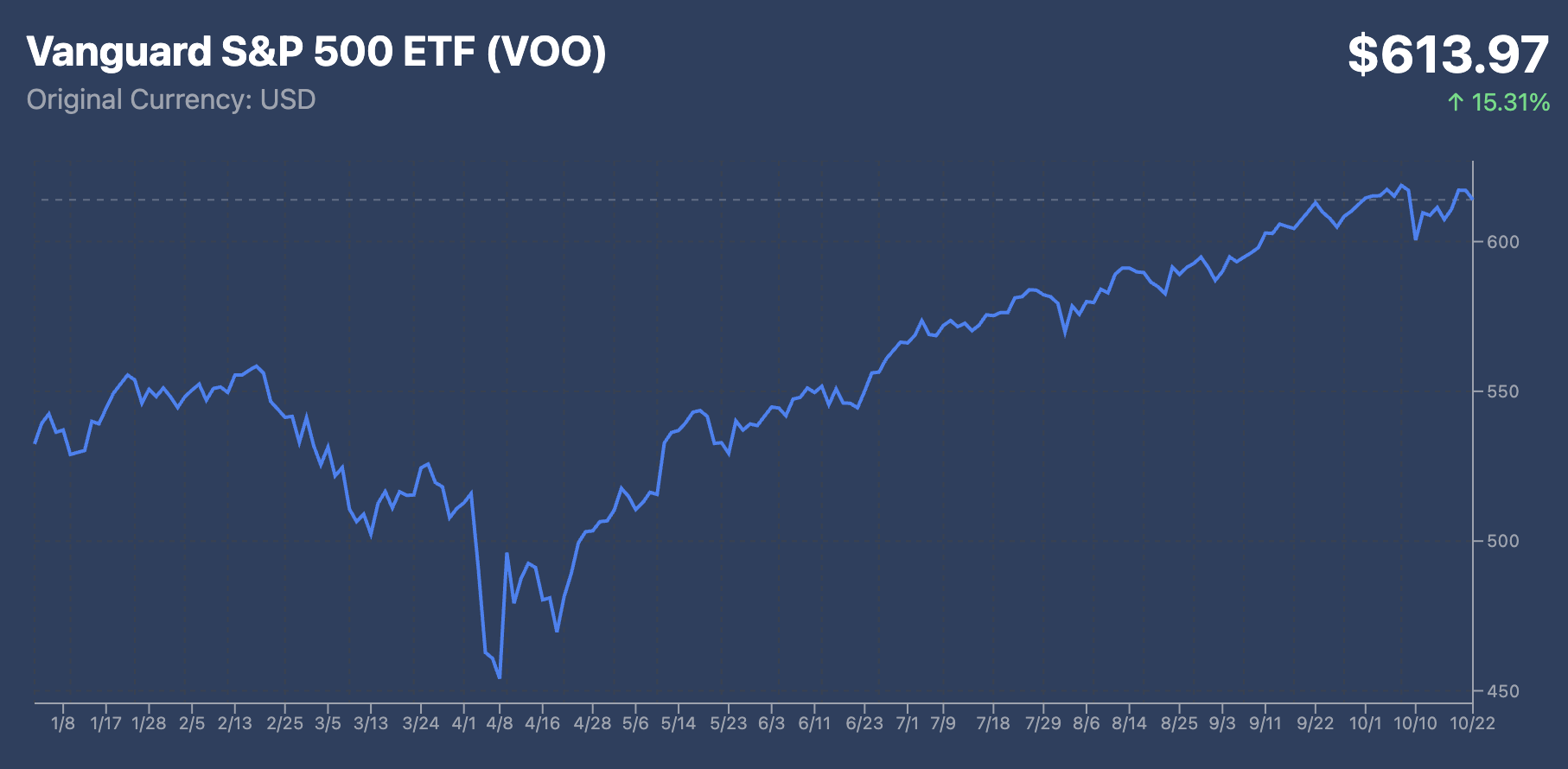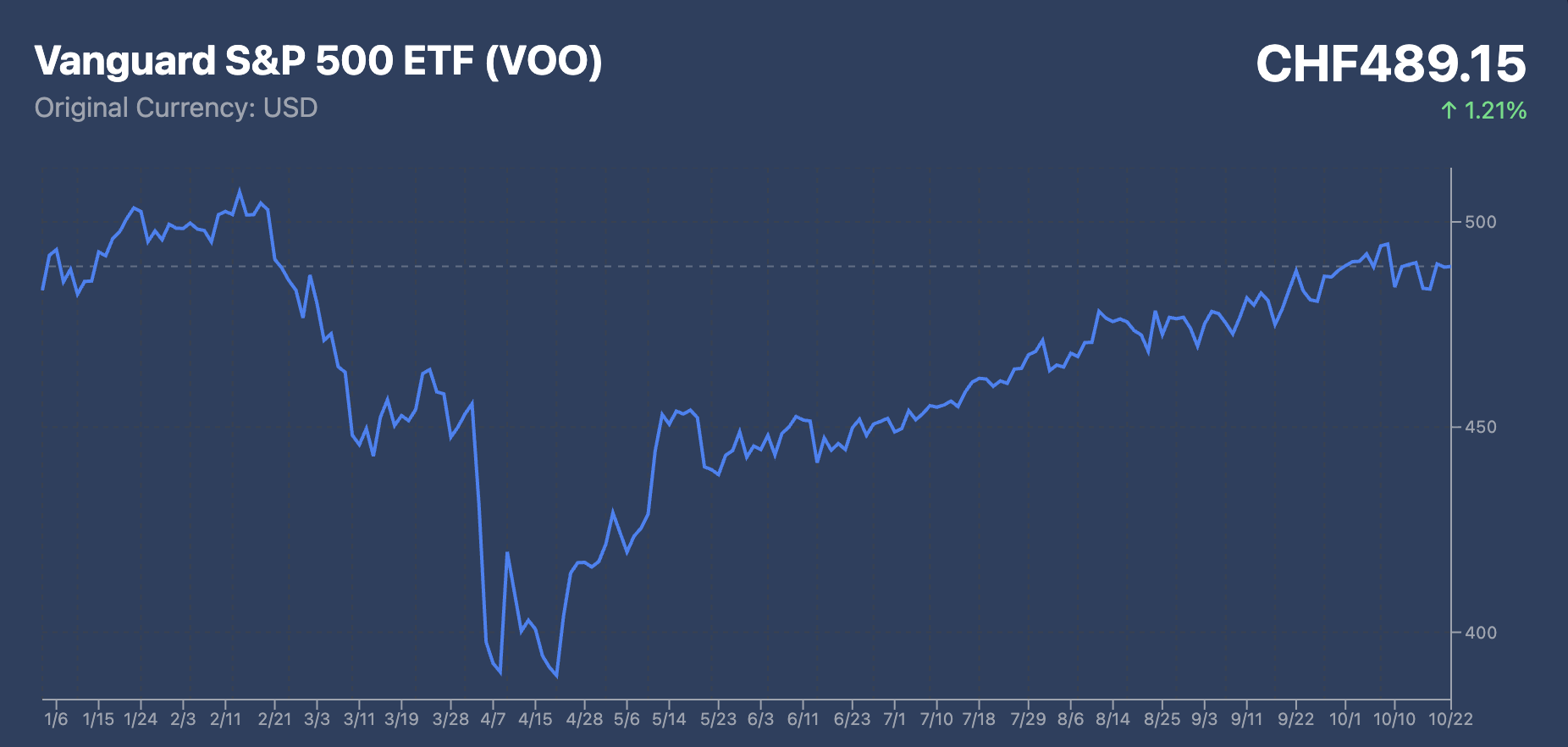Why Currency Matters: The Hidden Impact on Your ETF Returns
When investing in foreign ETFs, currency fluctuations can dramatically affect your returns. A Swiss investor in VOO might see vastly different results than a US investor—even though they own the same fund.
The Currency Blindspot
Most investors focus on an ETF's performance in its base currency. If you're tracking the Vanguard S&P 500 ETF (VOO), you'll typically see returns quoted in US dollars. But what if you're based in Switzerland, Europe, or Japan? The currency exchange rate between your local currency and the USD can significantly amplify or diminish your actual returns.
A Real-World Example: VOO in 2025
Let's examine a concrete case that illustrates this concept perfectly. Consider the year-to-date (YTD) performance of VOO as of October 2025:
The Same ETF, Two Different Stories
- 🇺🇸 US-based investor (USD): +15.31% YTD return
- 🇨🇭 Swiss-based investor (CHF): +1.21% YTD return
That's a staggering difference of over 14 percentage points! Both investors own the exact same ETF, tracking the same S&P 500 companies. So what happened?


Understanding Currency Headwinds
The Swiss franc (CHF) strengthened significantly against the US dollar (USD) throughout 2025. While the S&P 500 companies performed well and VOO's USD price increased by 15.31%, the strengthening CHF eroded most of those gains when converted back to Swiss francs.
Key Insight: When your home currency strengthens against the currency of your investment, it creates a "currency headwind" that reduces your returns. Conversely, when your home currency weakens, it creates a "currency tailwind" that amplifies your returns.
Breaking Down the Math
Here's a concrete example of how currency movements affect your returns:
- January 2025: You invest 10,000 CHF when USD/CHF=0.90775 → You get ~$11,016.25
- The investment grows: VOO increases 15.3143% → Your investment is now worth $12,703.31
- October 2025: USD/CHF = 0.7967 (CHF strengthened) → Converting back gives you 10,120.72 CHF
- Your actual return: The investment is now worth only ~1.21% more in CHF terms
⚠️ Note: This example does NOT account for currency exchange costs. In practice, you would need to deduct conversion fees on both transactions (CHF→USD when buying, and USD→CHF when selling). However, these costs can be very low when using brokers like Interactive Brokers (IBKR), often totaling less than 0.05% for both conversions combined.
Why This Matters for Global Investors
This currency effect isn't unique to Swiss investors or VOO. It applies to:
- • European investors buying US-listed ETFs (EUR/USD movements)
- • US investors buying international ETFs (USD/EUR, USD/JPY movements)
- • Any investor holding assets denominated in a foreign currency
- • Investors comparing different markets or tracking their actual purchasing power
The Bottom Line
Currency movements are an often-overlooked but critical factor in international investing. As our VOO example demonstrates, a 15.31% gain can become just 1.21% depending on your home currency—or vice versa in favorable conditions.
The key is awareness. By understanding and monitoring currency effects, you can make better-informed decisions about your international investments and set realistic expectations for your returns.
Ready to see how currency affects your ETF investments?
Use ETF× to track your favorite ETFs in your local currency and understand the real impact on your portfolio.
Explore ETF× Dashboard →